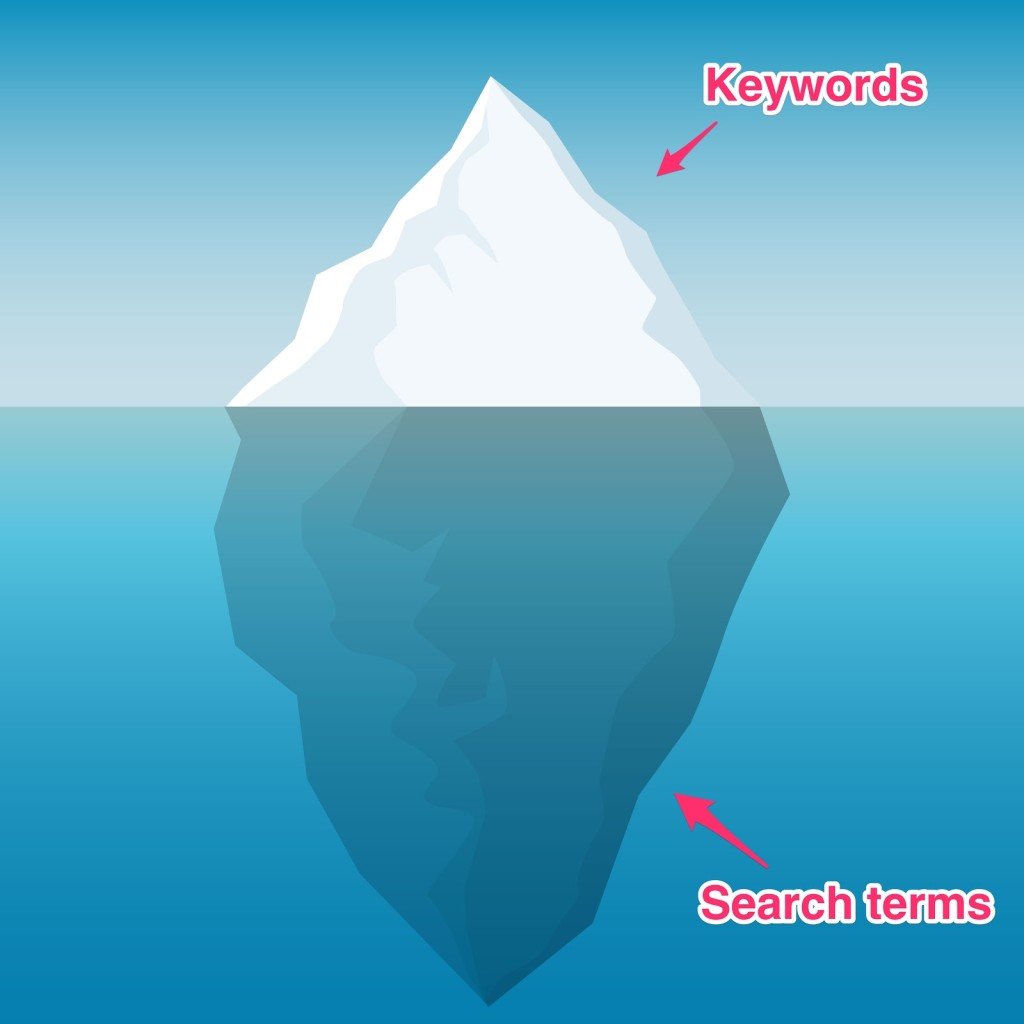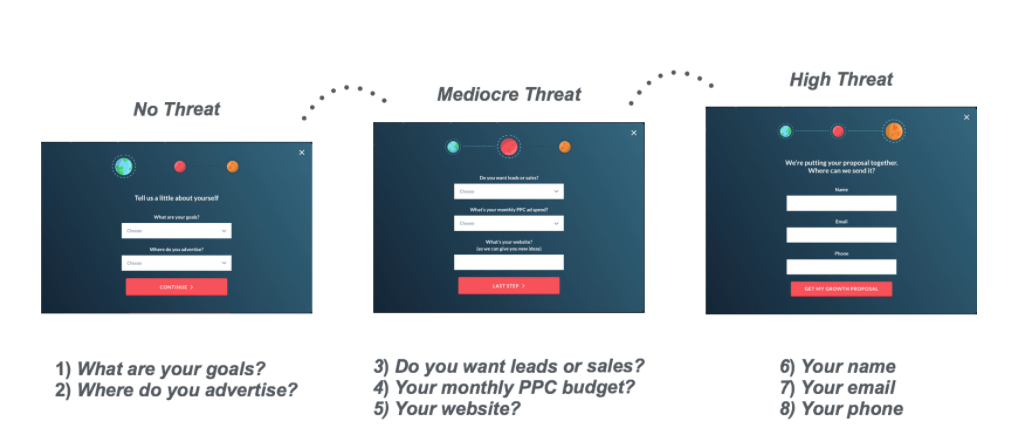Online advertising is no longer an add-on strategy or consideration to improve your brand’s strength; it’s a must if you want to succeed in the modern consumer space.
Updating your advertising used be easy, like choosing a new font for your Yellow Pages spread or shooting a new spot for the local TV station.
Today is not that time.
Today, everyone is online. This means the most effective opportunities to grow your company are in online advertising.
We’ve put together 12 ways that you can use online advertising to grow your company. These methods, like just about all online advertising, fall into two broad categories: Pay-Per-Click (PPC) ads and content for organic search engine results, which is filed under Search Engine Optimization (SEO).
Let’s start alphabetically (and because it’s our favorite) with PPC.
Get brand new marketing strategies straight to your inbox. 23,739 people already are!
Part One: PPC
Pay-Per-Click advertising allows you to reach web users who might be interested in your products or services with targeted text, image, and video ads.
As far as “advertising” goes in online advertising, PPC represents that ad space where SEO occupies a more organic, discovery based form of marketing.
With PPC, each time a user clicks into your ad on a search engine, social network, or third-party website, you pay for that click — hence the name. PPC ads can appear as text-only, images, video, and more, but they all typically link to specialized landing pages designed to convert your audience.
Google’s Search and Display Networks are the most common channels for PPC ads, but Facebook, Bing, and other outlets have also proven to be profitable for businesses that want to grow through online advertising.
As a successful (but modest) PPC agency, we’ve developed a few of our own techniques to make our clients’ campaigns more effective. Combined with constant testing and conversion rate optimization (CRO), these methods are a surefire way to grow your company with online advertising.
1. Single Keyword Ad Groups(SKAGs)
Setting up your PPC account the right way is crucial if your campaign is going to succeed.
One of the most common problems we find in pre-existing PPC accounts is too many keywords per ad group. Many marketers start out with 10-20 keywords in a Google Ads group because they fit a similar theme.
These clusters of keywords might create strong traffic numbers early on, but you’re not going to get the conversion rates and ROI your campaign is capable of. Too many keywords per ad group can dilute the relevance of your ads and produce an inexact message match.
Our antidote for PPC campaigns with “keyword bloat” is simple — Single Keyword Ad Groups (SKAGs), or ad groups with just one keyword in them.
By building ad groups configured for exact match, phrase match, and modified broad match (not standard broad match) around the same keyword, you can be more confident that the keywords you’re bidding on match the search terms you’re paying for.
Pairing your highest-performing keywords with their own unique ad groups narrows your campaign’s focus to users searching for precisely what your offer entails. Naturally, this is a much more promising audience than trying to convert users who searched for something related to your offer, but not your offer exactly.
SKAGs is one of the fastest ways to improve your PPC performance metrics, including click-through rates, quality scores, and most importantly, revenue.
2. Iceberg Effect
The Iceberg Effect is basically the flipside of SKAGs. It’s what happens to your PPC campaign when you’re so weighed down beneath the surface that visible activity (read: ROI) almost disappears.

What we call The Iceberg Effect is actually a ratio comparing your search terms to your keywords.
Throughout your PPC campaigns, on Google Ads as well as other search engines and social networks, your goal is to get that ratio as close to 1:1 as you can. If you have too many terms for your keywords, you’re sunk.

Why is this ratio important?
Well, as we mentioned above, too many search terms, especially ‘broad match’ terms, means that users who see your ads aren’t getting the exact match for the search that they performed in the first place.
Which means you’re paying for clicks from users who have no intention of converting.
Doesn’t sound like much of a strategy, does it?
To avoid the iceberg, decrease your Search term to Keyword ratio with smaller ad groups and smaller targeting criteria. SKAGs is a great method for this, as is removing low-performing or irrelevant keywords.
A well-constructed, iceberg-free PPC campaign can improve everything from Quality Scores and click-through rates to cost-per-clicks and cost-per-conversions.
To learn more about steering away from The Iceberg Effect, click here.
3. Single Product Ad Groups (SPAGs)
As the Google Shopping equivalent of SKAGs, Single Product Ad Groups (SPAGs) aren’t too hard to figure out — they’re ad groups in your Shopping campaign with just one product.
Using single ad groups for products makes it much easier to track and judge the success of your online advertising efforts. You’ll be able to see which products are triggering searches, the cost per conversion for selected products, and much more.
Of course, keywords and products aren’t the same thing.
If your eCommerce store offers hundreds of items, the thought of setting up unique ad groups for every product might make you hyperventilate.
SPAGs can still provide your advertising with a boost, however, if you pick out a few top-selling products and build each of them an ad group to call their own. By dedicating a portion of your ad spend to proven performers, SPAGs can drive relevant traffic and ensure that your campaign is generating ROI.
4. Breadcrumb Technique
The Breadcrumb Technique is a way to rethink an often-overlooked component of your PPC campaign: the landing page form.
See, a lot of CRO experts will tell you that to convert visitors effectively, you need to cut your number of form fields down to the bare minimum.
These folks’ hearts are in the right place, of course. But we’ve found that landing page forms reduced to a user’s name, phone number, email and nothing else doesn’t engage visitors. In fact, it does the opposite — people are turned off by the high-pressure questions and ignore the benefits and incentives of your offer.
The Breadcrumb Technique rewrites this script with landing page forms that proceed in multiple stages. Anonymous, low-threat questions in the early stages act as ‘breadcrumbs’ to guide your visitor down the conversion path.
Just to prove that we practice what we preach, take a look at our three-stage proposal form below:

Starting with identifying but anonymous questions shows your audience that you know what you’re talking about, which generates trust. By the time prospective leads are asked to “give it up” (“it” being their personal information), they know you’re serious about what they’re looking for.
Multi-stage forms also help to weed out unqualified leads who can’t provide the basic information you’ll need to complete their transaction. In other words, The Breadcrumb Technique doesn’t just help your landing page form convert at a higher rate, it will improve your qualified leads too!
5. In-App Ads
Advertising in smartphone and tablet applications has gone from trivial to essential almost overnight.
Studies of internet usage show that more than half of global website traffic was generated through mobile phones in 2018, and that apps drive more daily engagement than mobile websites.

Further, the data available from app tracking makes it much easier to target users based on specific information, including demographics, location, in-app actions and more.
In other words, the way people use their devices can give you a lot of insight into whether or not they are likely to convert, and effective mobile ads are the best way to reach your audience where it’s already spending most of its digital time.
6. Retargeting
Retargeting (or remarketing) tracks users who have visited your website and failed to convert to third-party websites and targets them with your ads.
It’s safe to say that users who have already shown interest in your brand are far more likely to convert — and there are plenty of statistics out there that say the same thing.
Retargeting your audience on Google’s ad networks, Facebook, email, Bing, or another paid channel doesn’t just provide you with a second chance to bring “the ones that got away” back into your sales funnel. It allows you to capitalize on your organic traffic by reaching them with paid ads, and creates upsell/cross-sell opportunities for existing customers.
7. Gold Pan Technique
For those of you who slept through high school history, panning for gold was a job in which guys dressed like hobos sifted through river mud looking for the 18th-century equivalent of a winning lotto ticket.
We can’t recommend panning for gold as a lifestyle choice, but the Gold Pan Technique makes it easier for you to filter through less profitable Shopping search terms and get to the good stuff: high intent searches that match your products.
Shopping campaigns don’t have a built-in way for you to control your search queries, but the Gold Pan Technique gives you the closest thing available to detailed, keyword-level control. By segmenting your traffic into generic, branded, and product-specific searches, you can spot waste in your budget easily and optimize for products and searches that are more profitable.
You can base the structure of your ad or product groups on SPAGs, categories, or whatever fits your business best. This tiered system funnels higher-intent searches toward campaigns designed for those gold nuggets, so you’ll want to set up matching group structures to measure results consistently across campaigns.
Part Two: SEO
Now, PPC isn’t necessarily for everyone.
Effective PPC campaigns require a competitive ad spend (that first “P” stands for “Pay,” remember?) and a proactive, knowledgeable in-house team or agency to manage it.
If your business isn’t a good fit for PPC, however, you can still use online advertising to grow your company through content generation and Search Engine Optimization (SEO).
Building your online presence organically with content creation has its pros and cons. On one hand, you aren’t pouring your budget into ads, you just have to put in the work to create your content and find your audience.
On the other hand, growing strictly through SEO can be slow going — for example, ranking at the top of Google search results can take anywhere from one to six months depending on your industry.
We’re not here to talk you out of using these SEO strategies — in fact, we use them ourselves, and they’ve worked pretty well. Just remember that all of these methods require time, effort, and long-term commitment to pay off.
8. Blogging
Blogging has been around almost as long as the internet, ever since the great Alexander Graham Blog published a scathing takedown of his local haberdashery.
These days, businesses use their blog as a top of funnel activity to engage their target audience, build their brand, and much more.
There’s enough blogging advice out there to fill a library, so we’ll keep this brief and high-level. The most important thing to remember when you’re blogging as a business is to write for your audience, not yourself.
For your blog to be effective as a marketing channel, you’ll need to create valuable content, or you’ll never see your search engine results improve. This means posts that answer common customer questions, provide insight into your industry, and — just like with PPC — include the keywords and phrases that your audience is searching for.
If you can consistently provide information your audience needs on your blog, the benefits are many — you’ll be seen as an authority in your market, build trust with your audience, and bring in more qualified leads.
9. Backlinks
Backlinks are another “traditional” SEO technique for increasing search engine traffic and results rankings. By having another site owner link to your website somewhere in their content, you can increase the “authority” of your website in Google’s algorithm.
Backlinks can appear anywhere — a blog post, a service page, a partners or associates page, etc. Not all backlinks are created equal, however. This method works best if you get a link from a site that has already established a high level of domain authority.

Like blogging, generating backlinks is not going to lead to overnight success. You’ll need to keep at it and grow your backlinks organically over time to see results.
10. Email Marketing
Email marketing might seem old-fashioned compared to the specificity of targeted PPC ads, but it’s still a useful online advertising tool. Until robots do all of our thinking for us, the personal aspect of communicating one-on-one with your leads through email will always be effective.
The key to email marketing is presenting your leads with offers, incentives, and information they want. This can include new product announcements, discounts, relevant blog content and so much more.
Even if your audience isn’t clicking through every email, keeping your brand on their mind can pay off when they’re ready to learn more or (hopefully) make a purchase.
11. Video Marketing
Video marketing is arguably the fastest growing and most in-demand form of online advertising available. Since most online shoppers would rather watch than read and it’s easier than ever to shoot digital video, tapping into this audience can lead to more engagement and higher conversion rates.

Search engines are also primed to feature video content, which means that if you’re looking for quicker results from SEO, video marketing might be the place for you.
If you’re using video to build your SEO profile, remember that you’re still creating content for your audience, not yourself. You’ll need to choose the right outlet for your videos, whether that be YouTube, Facebook, or some other channel that your audience engages with.
12. Podcasts
As video ads are modernizing the local TV spot, podcasts are moving into the role that talk radio played for most consumers just a few years ago.
Increasing mobile phone usage has led to the growth of podcasting, and the ability to target specific, relevant industry niches makes it even more beneficial for businesses.
Starting a podcast is even easier than producing video, and if you can create your own, the episodes that you upload to iTunes or your preferred podcast provider can also boost your search engine results. Appearing as a guest on an existing podcast — especially one with an established audience — can also have the same effect as a high-quality backlink.
Online Advertising Wrap Up
The range of channels and options available to grow your company with online advertising is no joke. But before you start picking out advertising strategies like entreés at a buffet, make sure you know exactly what you’re expecting your campaign to provide.
Are you selling products or generating awareness of your brand? Are you trying to grow as a market authority or gain market share? Without a set goal and plan to reach it, your online advertising campaign will look more like a blind man’s dartboard than a path to success.

Finally, don’t be afraid to diversify. None of the methods above are mutually exclusive. For example, investing in PPC doesn’t mean you can’t build your brand with blogging at the same time, and retargeting can be effective as through email as well as display ads.
The most important thing is to find the right combination for your business and keep evolving and improving as your results come in.
Good luck out there!